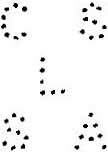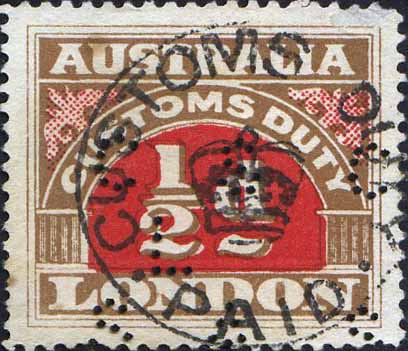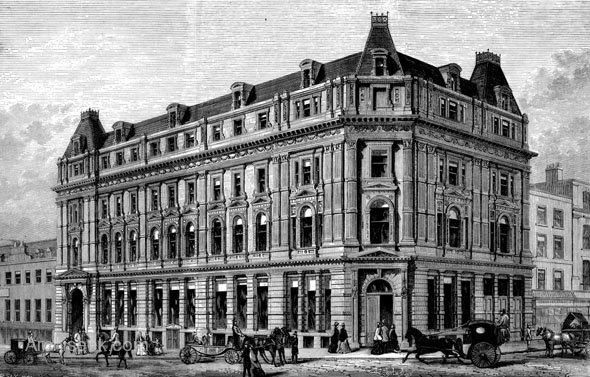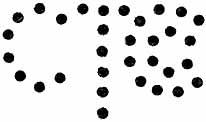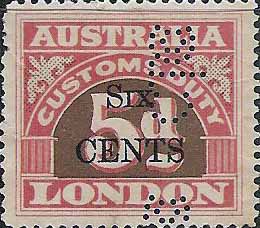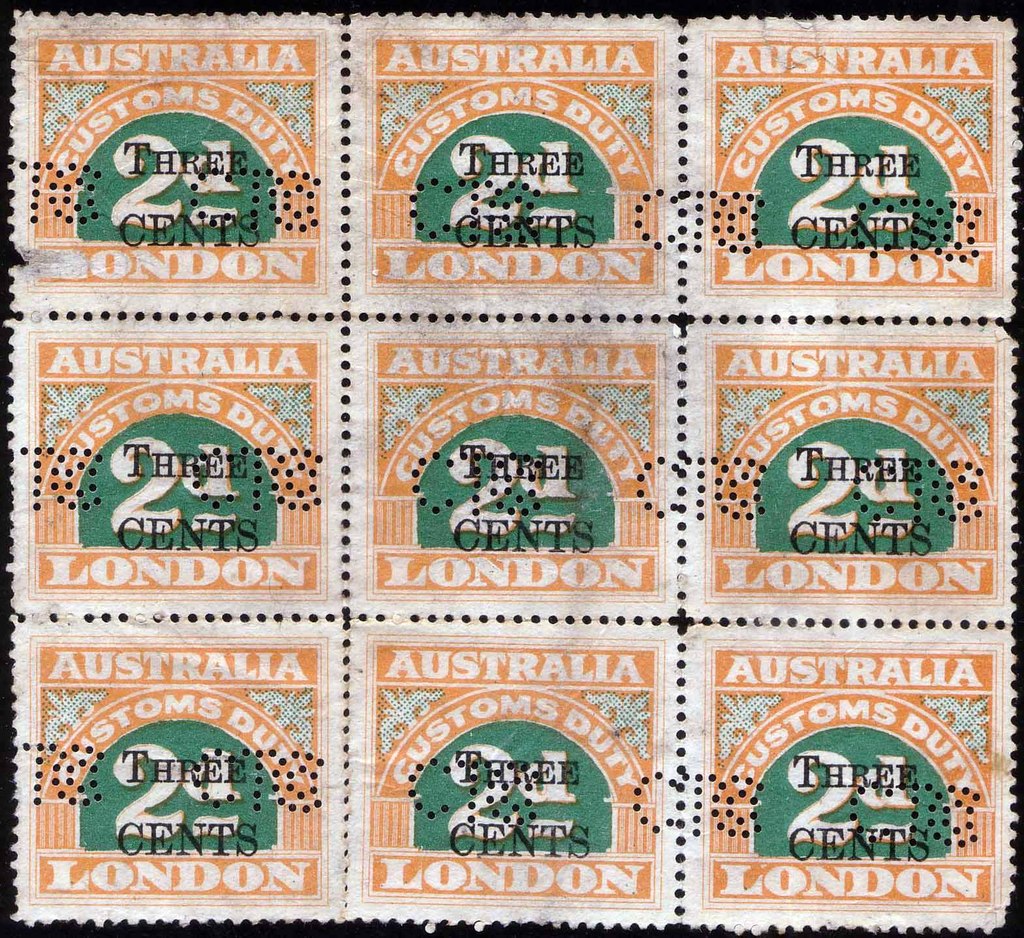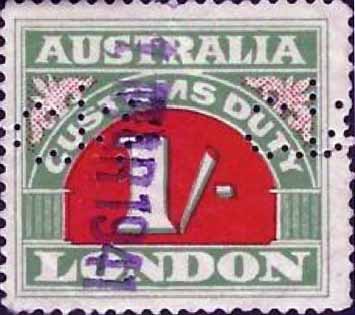|
Private Revenue Perfins of the Commonwealth of Australia An Elsmore Coath production The authors would welcome your comments additions or input into this work C -------------------------------------------------------- CS/L/SA.a
User: Civil Service Supply Association Address: London, UK Revenue Use: 1923 issue ½d Rarity Scale: 1923 issue ½d R4
Background: The Civil Service Supply Association (London) is the oldest Co-operative Society in the Service, and it was the model upon which all other London Co-operative Societies have been formed. It was formed in 1865, and the Association originated in the Post Office as a collective buying group for Postal Employees and was initially named the Post Office Supply Association. It expanded its membership to include other members of the Civil Service and was soon renamed the Civil Service Supply Association - London. The original prospectus of the Association stated that: "This Association has been formed for the purpose of supplying officers of the Post Office and their friends with articles of all kinds, both for domestic consumption and general use, at the lowest wholesale prices." Device: The device was a multi die device of at least a 4 Dies in a 2x2 format. This pattern is listed in “The New Illustrated Catalogue of GB Perfins” in the C section as 7140.02 with a usage period of the devices stated as 1905 until 1925. The pattern is one of 10 different patterns confirmed to this user. Related Patterns: Nil *Charles Dickens (Jr.), Dickens's Dictionary of London, 1879
-------------------------------------------------------- CTCo.a
User: Caterpillar Tractor Co. Agricultural Equipment Address: from 1910 East Peoria, Illinois, USA Possibly also Oaklands, USA Revenue Use: 1918 issue 1c on ½d, 2c on 1d, 3c on 2d, 4c on 3d, 5c on 4d, 6c on 5d, 6c on 5d (vertical), 10c on 7d Rarity Scale: 1918 issue 1c on ½d R2, 2c on 1d R3, 3c on 2d R1, 4c on 3d R4, 5c on 4d R3, 6c on 5d R4, 6c on 5d (vertical) R3, 10c on 7d R4
Background: *Caterpillar Tractor Company's origins can be traced back to two companies. In 1871 Daniel Best established a company to manufacture farm machinery and previously Charles Holt had founded C.W. Holt & Company in 1863 to sell hardwood products. Holt's brother soon joined him, and they established the Stockton Wheel Company to manufacture wooden wheels. In 1886 the Holts developed a link-belt combined harvester. This machine improved on the already innovative combined harvester and thresher by using flexible chain belts rather than gears to transmit power from the ground wheels to the working parts of the machine, therefore cutting down on machine breakage. In 1892 the Holts built a steam-driven tractor that could haul fifty tons of freight at three miles per hour. At this time the Stockton Wheel Company was incorporated as Holt Manufacturing Company. The company's next breakthrough came when it produced the first caterpillar-style tractor ("crawler"). The crawler was built on tracks instead of wheels, it and could negotiate any terrain short of a swamp. In 1906 a steam-powered crawler was perfected, allowing farmers to use land that was previously considered useless. In 1908 Daniel Best sold out to the Holts, however two years later, Best's son, C.W. Best, formed his own company to manufacture tractors. The Holts company continued to improve on the “crawler” through the following decade, and it was the model for the design of tanks during World War I. Holt's tractors also hauled artillery and supplies during the war. In 1925 Holt and C.W. Best's company merged to form the Caterpillar Tractor Company. Caterpillar began to expand internationally and opened dealerships in Australia, the Netherlands, East Africa, and Tunisia. The company's sales were $52 million by 1929 and although these fell in the Depression years it was boosted in the late 1930s by selling millions of dollars worth of tractors to the Soviet Union. At that time, the Soviets were forming huge collective farms and required large tractors to help manage them efficiently. By 1931 the diesel tractor engine was perfected by Caterpillar. The company redesigned many of its old tractors and witnessed growth in its sales through the decade. Later during WW2, Caterpillar's greatest contribution was its conversion of gasoline airplane engines into diesel engines which could be used in armored vehicles. The company also manufactured other engines and artillery shells for the war effort. Caterpillar tractors worked in battle zones during the war, repairing and building roads, bulldozing tank traps, and constructing pillboxes. Such work often required that the tractors have bulldozer blades attached, which led to the application of the term "bulldozer" to Caterpillar tractors. The company thrived in the post-war years, as Europe and Japan demanded its products for their rebuilding projects. Taking advantage of the high demand for its tractors, Caterpillar launched an expansion program in 1949. In 1950 the company established its first overseas subsidiary, Caterpillar Tractor Company Ltd. of Great Britain. The company’s growth continued in the 1960’s despite periods of labor unrest at its production facility in Peoria, Illinois. In 1968 Caterpillar decentralized some of their production in the US and then later in the 1970s they started to develop smaller diesel engines. Caterpillar began a dramatic expansion program in 1974, building several overseas manufacturing plants initially in Brazil and other South American countries but later more in China. Device: A multi die device of at least 6 Dies in a horizontal array but possibly as many as 10 Dies. There are two CTCo patterns, CTCo.a and CTCo.b. with CTCo.a being found used on Custom Duty stamps used from the US and CTCo.b being found on Custom Duty stamps used from England. The CTCo.a device is listed in "The Catalog of United States Perfins" in the C section as C 342 and is attributed to the Peoria plant in Illinois, with a period of usage from 1917 until 1933. However the US catalogue also lists a similar pattern C 341, which is identical except that the T is shorter at the bottom by one pin. This other pattern (C 341) is attributed to the plant in Oakland in California with a usage between 1923 and 1938. The patterns that we have seen on the US version of these Australian revenue stamps have almost always been complete in the T, which indicates that primary usage was from the Peoria, Illinois plant but it may be that some usage occurred at the Oakland, California plant. However it may also be that the small number of strikes seen without the bottom pin of the T may be due to a missing or blocked pin on the Peoria, Illinois device. Therefore any usage other than that at Peoria, Illinois needs to be confirmed. Related Patterns: CTCo.b *Harvard Business School Library
-------------------------------------------------------- CTCo.b
User: Caterpillar Tractor Co. Agricultural Equipment Address: 60 Queen Victoria St, London, UK (from c1921) 36 Queen St, London, UK Revenue Use: 1923 issue ½d, 1d, 2d, 3d, 6d, 1/- Rarity Scale: 1923 issue ½d R4, 1d R4, 2d R3, 3d R2, 6d R5, 1/- R4 Background: See CTCo.a above Device: A multi die device of at least 6 Dies in a horizontal array but possibly as many as 10 Dies. There are two CTCo patterns, CTCo.a and CTCo.b. with CTCo.a being found used on Custom Duty stamps used from the US and CTCo.b being found on Custom Duty stamps used from England. As opposed to the US device CTCo which is almost always a complete strike the strikes of the CTCo.b device tend to have many missing pins. The CTCo.b device is not listed in the “The New Illustrated Catalogue of GB Perfins” which suggests that it was not used on the postage or revenue stamps of Great Britain. However we know that the device was most likely located in Great Britain at some time as there is a great deal of usage of Australian Customs Duty stamps in the UK format with this pattern. It is possible that the CTCo.b device is actually the device reported in "The Catalog of United States Perfins as C 341 (see CTCo.a above) which is attributed to the plant in Oakland in California with a usage between 1923 and 1938. This device is reported with a pin missing at the base of the T and this and other missing pins is a characteristic of the CTCo.b device. Related Patterns: CTCo.a -------------------------------------------------------- © copyright 2011 |
